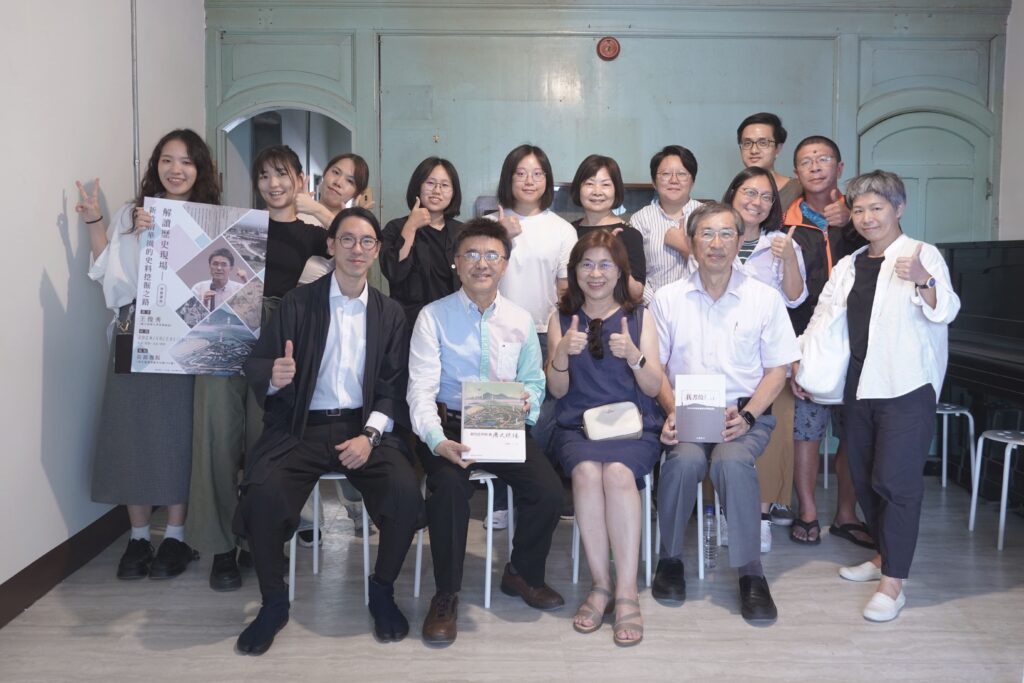Driven by a ‘matter-of-course’ curiosity, discovering the extraordinary in places:
Multi-perspective approach to historical sites
In contrast to the single perspective of official historical records, local historical research focuses on piecing together historical images from the viewpoints of many ‘individuals,’ thereby unraveling the delicate and subtle textures of an era that are often overlooked in macro narratives. In the process of exploring the history of Chang Yuan Hospital, the X-Basic Planning team not only delved into the story of the Hsu family but also outlined the long-standing daily life of the neighboring blocks, attempting to gather more diverse interpretations of Lukang’s century of changes.
This time, X-Basic Planning invited Professor Emeritus Wang Chun-Hsiu from National Tsing Hua University to Chang Yuan Hospital to speak on ‘Interpreting Historical Sites – The Journey of Historical Excavation in Hsinchu Tsing Hua Garden.’ Starting from several important segments in the development of Hsinchu Tsing Hua Garden, he shared his 30-year journey of local research, which resulted in works such as ‘Historical Sites of Hsinchu Tsing Hua Garden’ and ‘I Write Therefore I Am: Memories Reproduced from the Library Stamps of Kaohsiung Refinery,’ and explained his methods of historical data collection and research.


Before the lecture began, Professor Wang Chun-Hsiu generously shared several precious antique medical books from his collection related to Dadu Huichun Hospital, which not only echoed the history of Chang Yuan Hospital but also recreated the close relationships between medical institutions in Taiwan during the Japanese Rule Period. Among them, the 1940 edition of ‘Japanese Medical Registry’ recorded the biographies of most Taiwanese and Japanese physicians at that time, including Dr. Du Hsu from Lukang. Later, Professor Wang Chun-Hsiu worked with the X-Basic Planning team to find a news report from August 1924 about Dr. Du Hsu’s decision to return to his hometown to practice medicine, from which they could roughly estimate the official opening time of Chang Yuan Hospital.
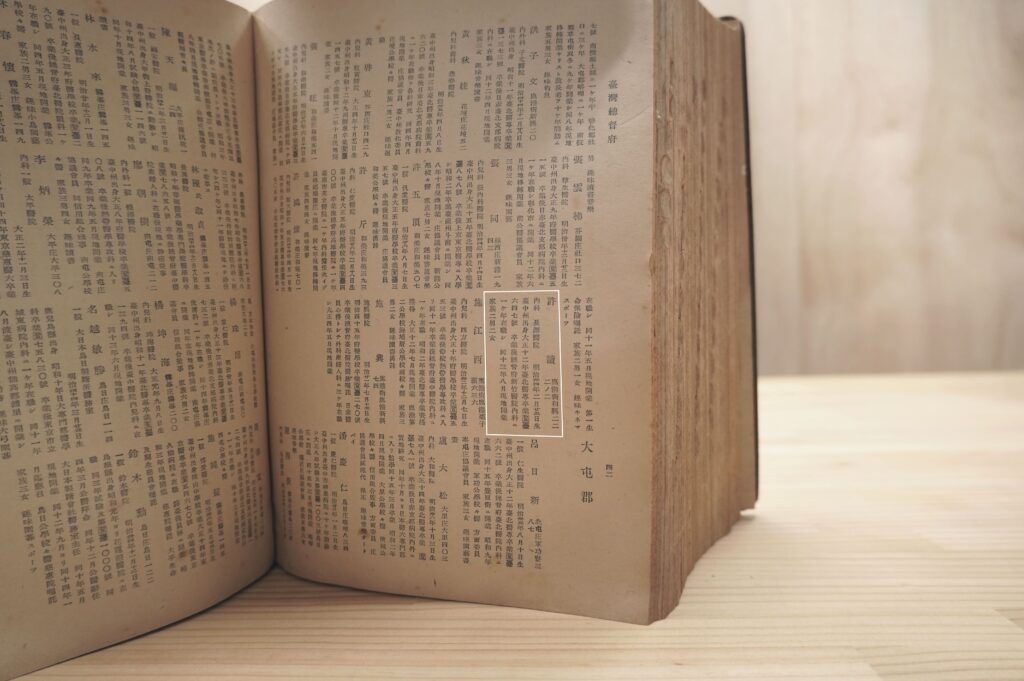
A Historical Quest Born from Curiosity
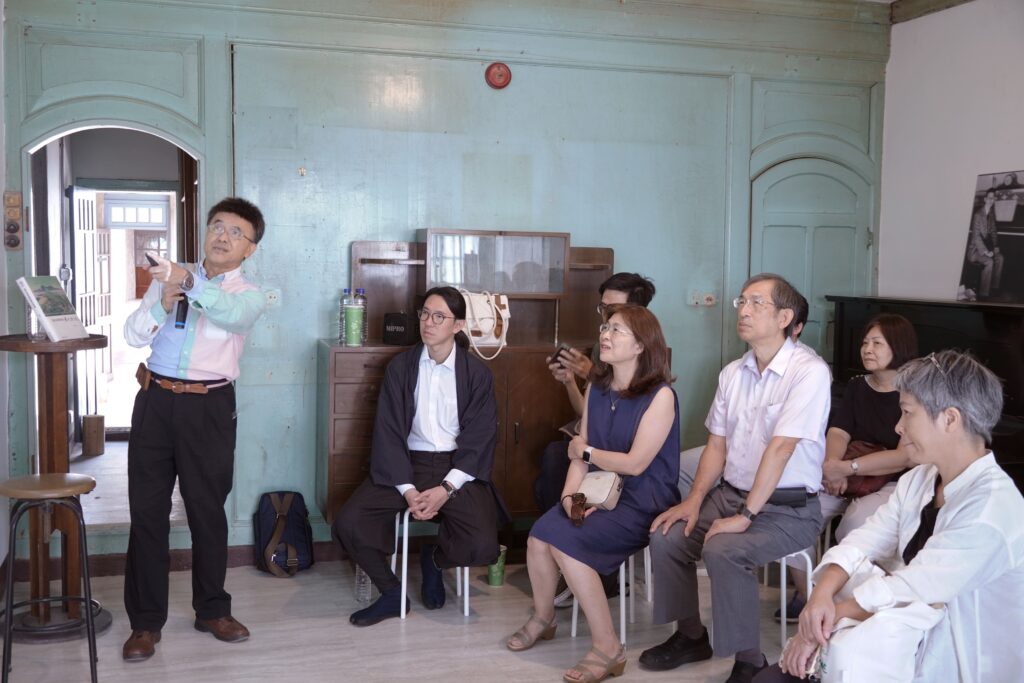
National Tsing Hua University and National Chiao Tung University, located in Hsinchu City, are academic strongholds of Taiwan. However, what did this stretch of land look like before becoming the lush, tree-lined campuses we see today? Professor Wang Chun-Hsiu shared how his interest in the history of the Tsing Hua campus was sparked: in 1990, when the newly built College of Humanities and Social Sciences was completed, the university invited Zhong Kui (a deity) to drive away evil spirits. Upon investigating the reason, he discovered it was because thousands of unclaimed graves once stood beneath the building. As the then Director of the Center for General Education at Tsing Hua University, Professor Wang became deeply interested in this matter. After reviewing historical documents and ancient texts, he gradually came to understand the area’s developmental history: the Tsing Hua campus, formerly ‘Chitu Qi’ (Red Earth Ridge), was near the ‘Earth Ox Red Line’ boundary during the Qing Rule Period. Many who perished in conflicts between indigenous people and Han settlers were buried there, naturally forming a public cemetery. This space became the predecessor of Hsinchu City’s First Public Cemetery, called ‘Jidan Mian (Egg Face) Public Cemetery.’
With this as a starting point, Professor Wang embarked on a 30-year journey tracing the history of the Tsing Hua campus, carefully comparing each seemingly trivial historical fragment, finally piecing together the past and present of Tsing Hua University, while also examining the stories of three major historical sites meticulously. The ‘Jidan Mian Public Cemetery’ bears witness to the friction and coexistence between ethnic groups during the Qing Rule Period; the ‘Japanese Navy Sixth Fuel Welfare Zone’ points to Taiwan’s past as a core fuel production area in East Asia; and the ‘Hsinchu Golf Course’ represents the traces of recreational parks widely established by the Taiwan Governor-General’s Office during the Japanese colonial period.
‘Everyone has the potential to become a historical detective. As long as you maintain a curiosity that questions the seemingly obvious, and continue to dig local history, you can discover extraordinary stories in seemingly ordinary things.’ Professor Wang cited the example of Tsing Hua University’s reestablishment in Taiwan after the war and its settlement in Hsinchu, noting that this seemingly natural event also conceals many historical contexts worth exploring in depth. At that time, under former U.S. President Dwight Eisenhower’s ‘Atoms for Peace’ initiative, nuclear technology came to Taiwan with American aid. In 1956, Tsing Hua University was reorganized as an atomic science research institution. Considering the dangers of nuclear reactors, the decisionmakers ultimately chose to build the campus in the dry, sparsely populated Chitu Qi area with little rainfall. National Chiao Tung University subsequently reestablished itself in a neighboring area.
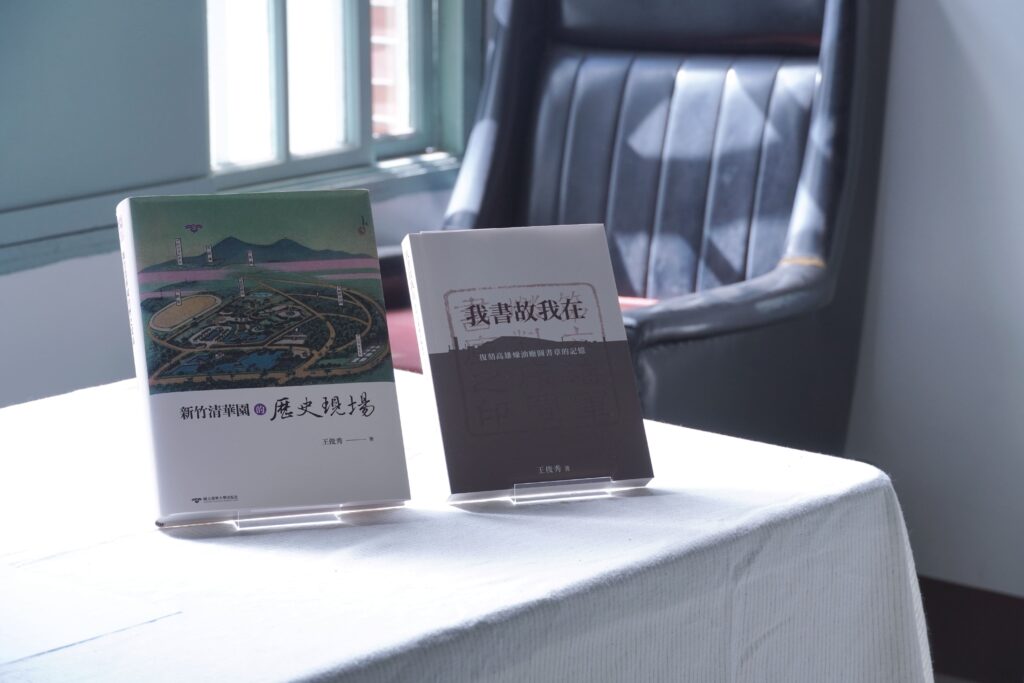
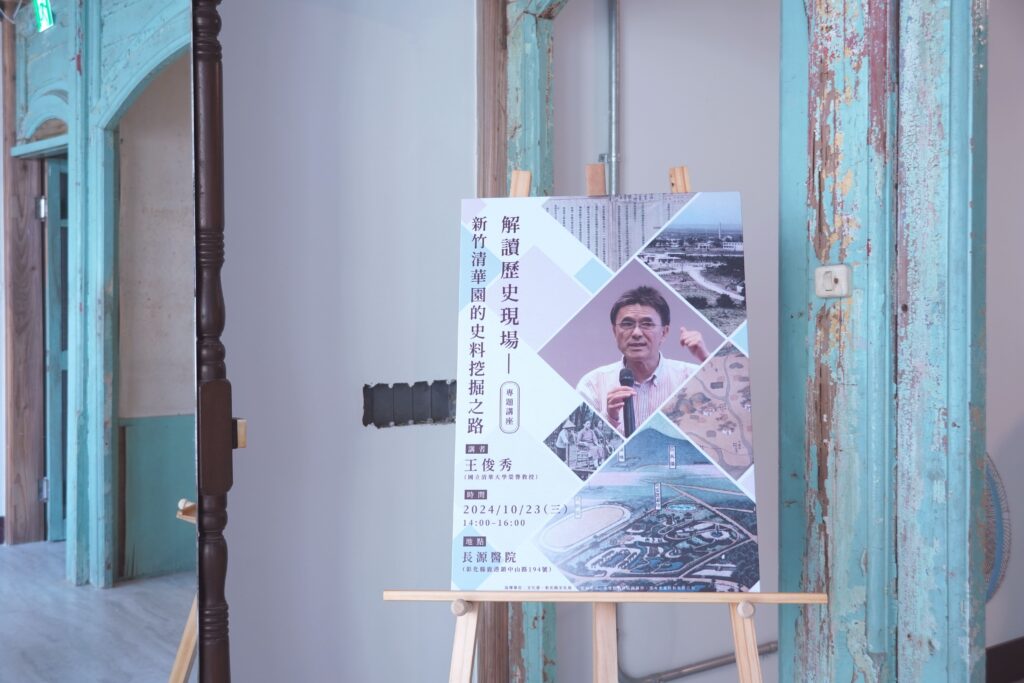
Reconstructing Historical Landscapes through Details
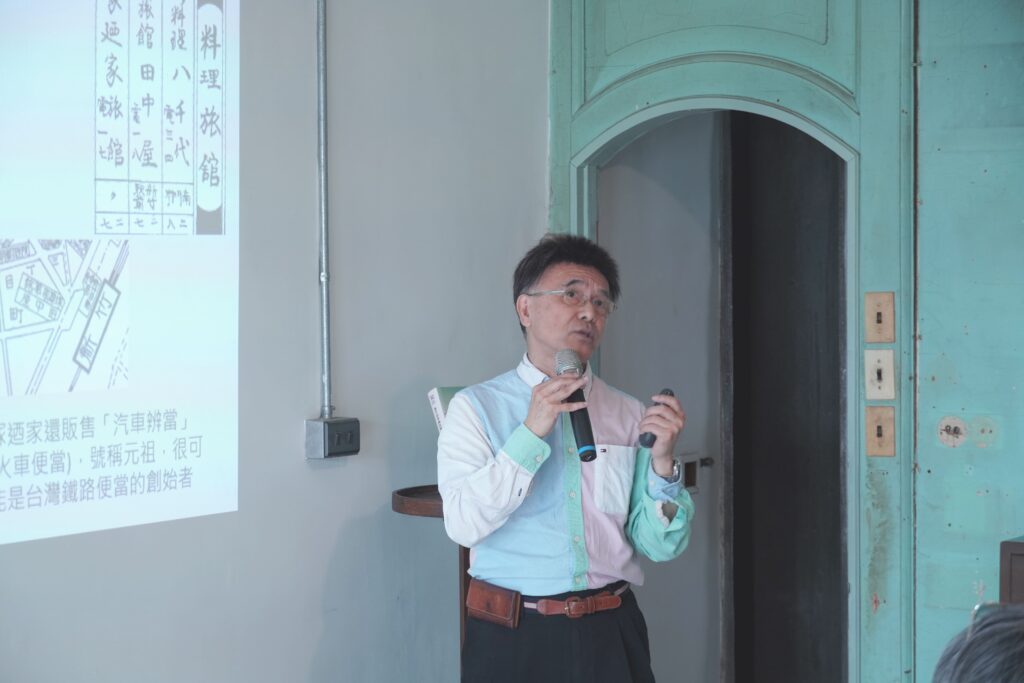
During the process of historical research, many details need to be observed and repeatedly examined to uncover their inherent value. While investigating the development of the Sixth Fuel Plant, Professor Wang noticed details of name changes from the library stamps on the title pages of books in the Kaohsiung Refinery collection, and unearthed clues about the interconnections between trolleys, railways, and airports from the Naval Facilities Department’s handover inventory. Furthermore, the Sixth Fuel Plant’s background of learning from Japan’s Second Naval Fuel Factory means that historical materials from both institutions can corroborate each other in terms of systems and spatial design.
Beyond immersing himself in printed historical materials, he has been utilizing today’s digitized document databases as practical tools that bring more convenience to historical research. For example, we can find historical maps for comparison from the ‘GIS Research Center at Academia Sinica,’ while the ‘Taiwan Governor-General’s Office Personnel Records System’ provides names of people who worked in government agencies during the Japanese Rule Period, and the ‘Taiwan Diaries Knowledge Base at Academia Sinica’ has compiled approximately 6 million words of diary texts with annotations.
Professor Wang Chun-Hsiu mentioned that the diaries left by social activist Huang Wang-Cheng, who once lived in the Chitu-Chi area, provide important information for studying the everyday lives of local people. Beyond documenting the interactions between people and the city, he also meticulously recorded the names of the rickshaw pullers who were responsible for pushing the hand-pushed trolleys. These ordinary citizens, rarely mentioned in official records, were vital forces driving society forward. Such connections can only be presented fully through small-scale spatial historical research.
Historical research is not about merely looking back at the past, but also serves as essential nourishment for local revitalization. As Professor Wang Chun-Hsiu observes, as long as we maintain a curiosity that questions the seemingly obvious, exploring what appears self-evident and the stories behind it, we will be able to piece together a more complete and authentic picture of the era. Through translation and representation, this deepens public identification with the land beneath their feet. In the future, X-Basic Planning will continue to embrace the spirit of historical detective work, exploring the historical context of family, Lukang district, and Taiwan’s medical development through the window of Chang Yuan Hospital.

